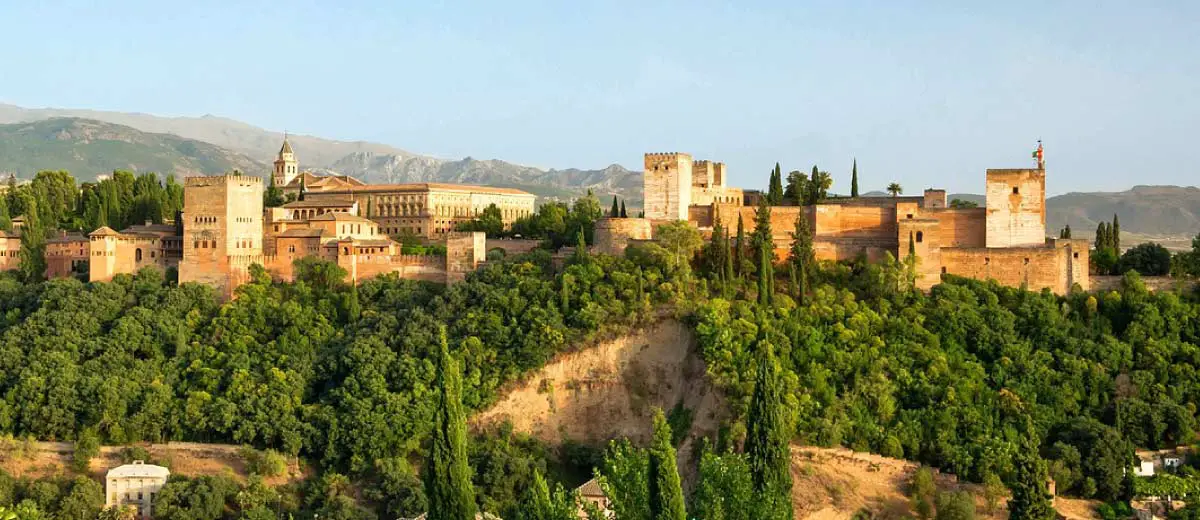The 21 New Wonders of The World
The original wonders of the world list was made by the Greeks after the reign of Alexander the Great. The Greeks were renowned for list-making and somewhere around the early 3rd century, the first curation was finalized as a travel hit-list for those lucky enough to do so at that time. Geographically, all of the 7 ancient wonders were located around the Mediterranean ring due to the obvious transportation limitations 2300 years ago! Unfortunately, of the original 7 wonders of the ancient world, only the Great Pyramid of Giza in Egypt still stands and it’s debatable if some of the sites of the others have even been found.
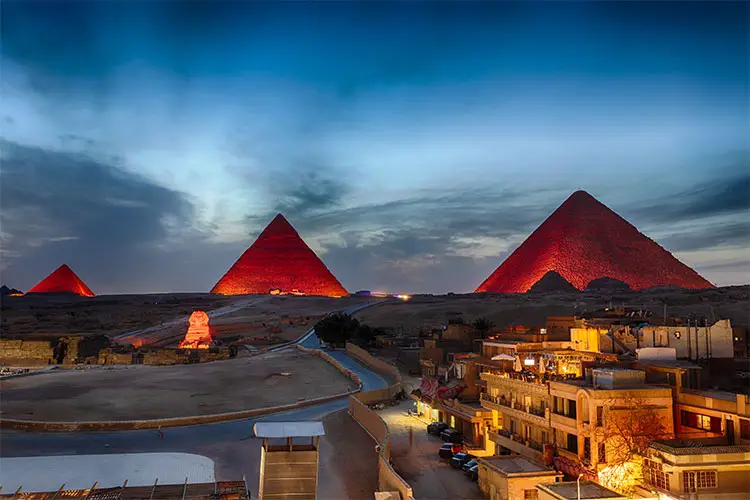
In 2000 a new project was launched using the internet as a democratic voting system to determine the New 7 Wonders of the World. The list was whittled down to 200 contenders and then further reduced to 21 finalists, all of which I’ll cover below. With over 100 million votes cast, in 2007 the list of the 7 New Wonders of the World was announced, with an honorary inclusion of the Giza Necropolis, the site of the only remaining original wonder, the Great Pyramid.
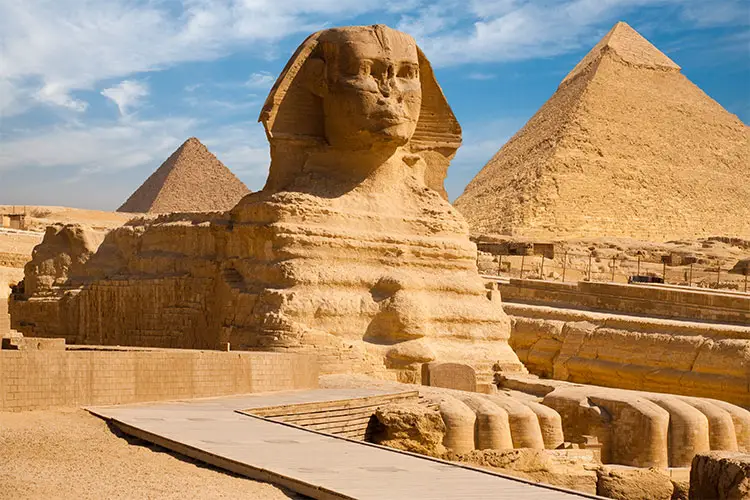
There is some debate into the fairness of the voting system with several countries, realising the tourism opportunity, launching massive campaigns to have their wonder voted into the top 7. Regardless, this list still provides an epic selection of ancient and modern sites worthy of any bucket list. Each of these wonders, with the exception of Neuschwanstein, is either themselves or within a UNESCO world heritage site, however, UNESCO declined to be part of the New Wonders project to maintain their ability to stay impartial. Sites are listed chronologically.
Honorary Inclusion
Great Pyramid of Giza, Giza Necropolis, Egypt
The only remaining wonder from the Greek’s original list, the Great Pyramid of Giza, is housed in the Giza Necropolis, an archaeological site in Cairo, Northern Egypt. It was commissioned by Khufu, the 2nd Pharaoh of the 4th Dynasty, and is known as one of the world’s greatest feats of engineering given the technology available at the time and is still a mystery to this day.
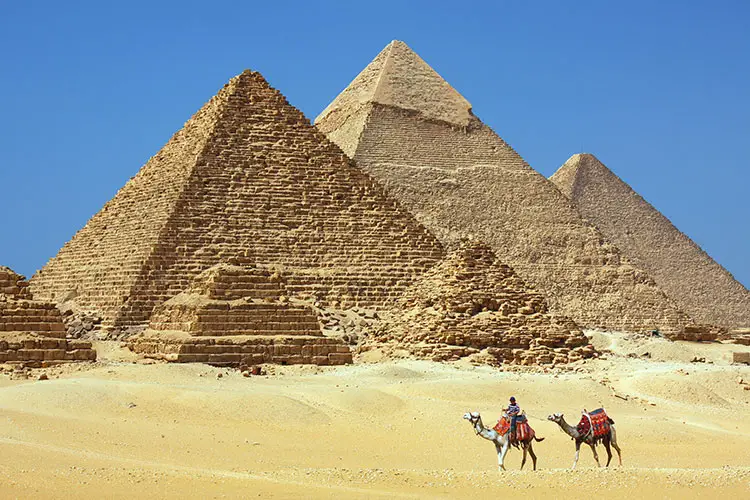
The Great Pyramid took around 20 years to build from 2580 – 2560 BC and was built from over 2 million blocks, standing at a height of 146 meters (479 feet). There are, of course, various other sites one can visit near the great pyramid including the Great Sphinx of Giza and, given its proximity to Ciro, several impressive museums including the Grand Egyptian Museum, the largest archaeological museum in the world.
7 New Wonders of the World
The Great Wall of China
The largest military structure in the world and the only man-made structure seen from space, the Great Wall was built over two millennia by various dynasties and stretches 13,171 miles (21,196 km) across China. There is some debate as to when construction started as sections of the wall were build independent of each other starting in the 7th century BC to protect various parts of China and weren’t unified until the 3rd century.
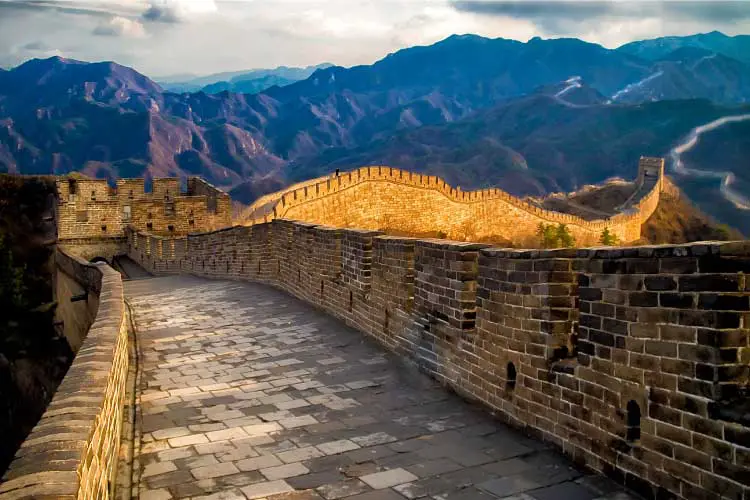
The wall represents the historical northern border of China with the most famous and well-preserved sections built by the Ming Dynasty in 1368 – 1664 AD. The Qing Dynasty, 1644 – 1912 AD, then extended the border of China north, making the wall obsolete. The most popular section of the wall for tourists lies just north of Bejing, where visitors can walk sections of the wall that seemingly stretch endlessly into the mountainous landscape.
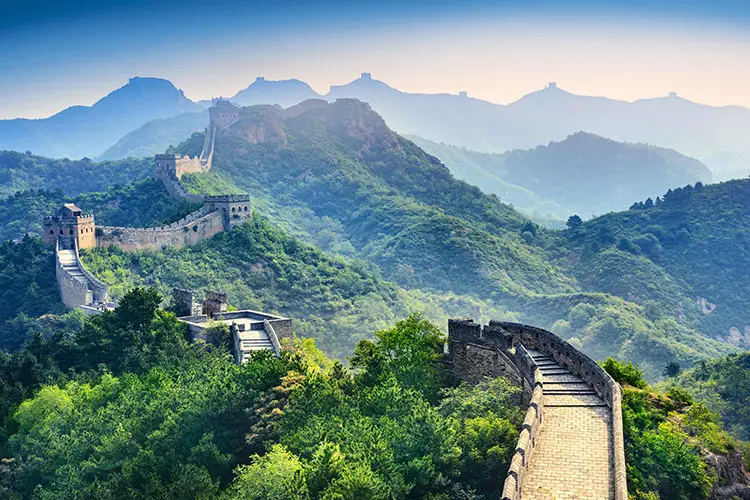
Petra – Al-Batrā Ma’an Governorate, Jordan
Petra is perhaps most famous for its grand rock-carved temple, Al-Khazneh but actually refers to an entire city, which contains many other features either carved out of or built from the surrounding sandstone. Other features of interest at Petra include a huge sandstone theatre, its great temple, and its set of Nabataean Tombs, the construction of which dates to around the 1st century AD.
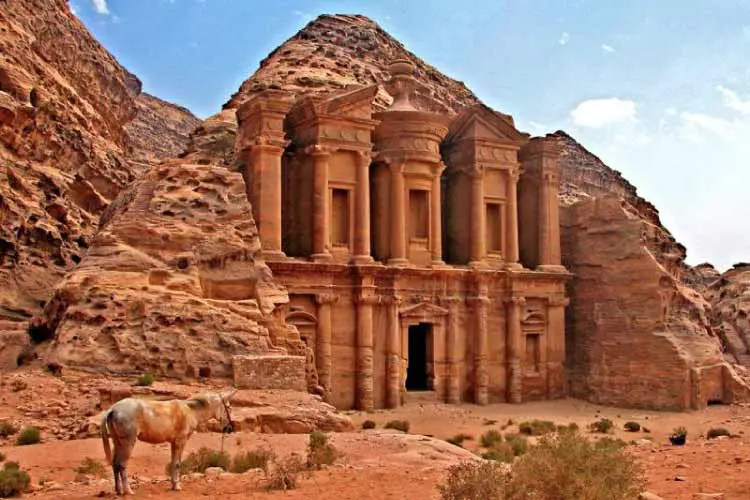
The city of Petra changed hands many times over the years and not only contains ruins from the aforementioned period but features three Byzantine churches built between the 5th – 6th centuries AD. Interestingly, new excavations were started opposite Al-Khazneh during the COVID-19 pandemic as the site became empty so archaeologists may discover even more rock-carved wonders than were previously unearthed before.
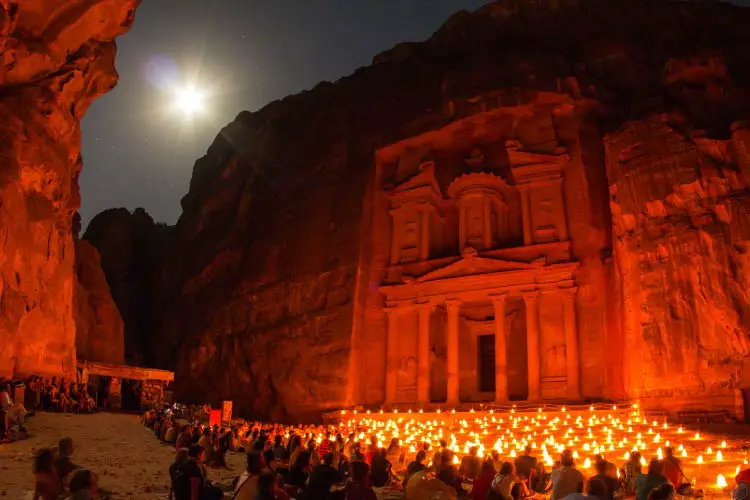
Colosseum – Rome, Italy
The most famous of all ancient Roman landmarks, the Colosseum is unique in its size and construction, using a network of arches known as vaults to create this 45-metre (150ft) free-standing, multi-story amphitheatre. Construction of the Colosseum began around 72 AD as part of an effort to restore Rome to its previous glory by Roman emperor, Vespasian after years of civil war.
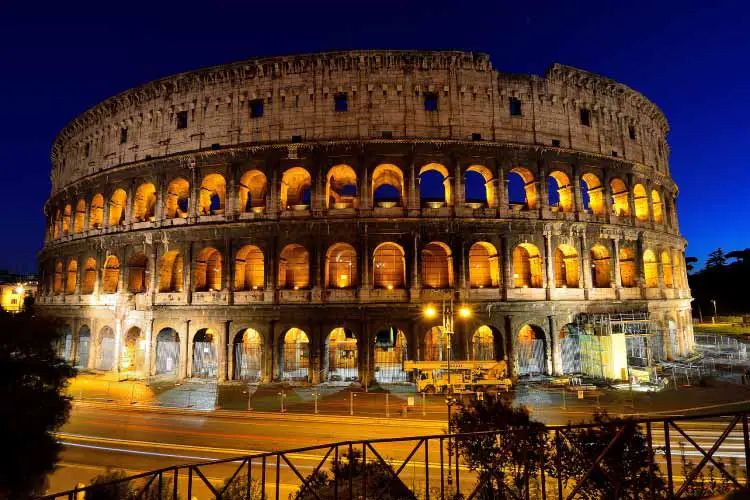
The Colosseum was the largest amphitheatre in the world at the time of building, housing at least 50,000 spectators with some estimates as high at 80,000. Unfortunately, the site was subject to looting and vandalism over the years and all of the marble seating that used to exist in the higher-class lower tiers no longer remains. Found in the heart of Rome, the Colosseum is surrounded by other famous landmarks such as the Roman Forum and several fantastic museums.
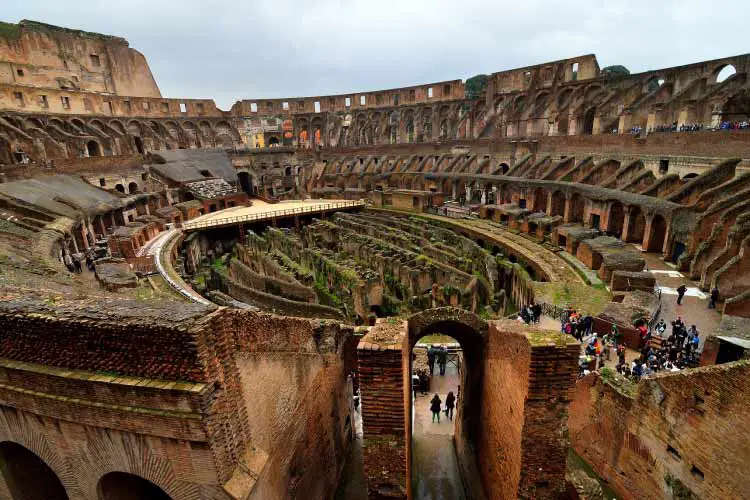
Chichen Itza – Yucatán, Mexico
Chichen Itza is situated on the Yucatan, a particularly beautiful peninsula in far eastern Mexico famous for its tropical beaches and cenotes. Although first inhabited around the 5th – 6th centuries AD by the Mayan civilization, the most important sites at Chichen Itza weren’t built until somewhere around the 8th – 12th centuries AD.
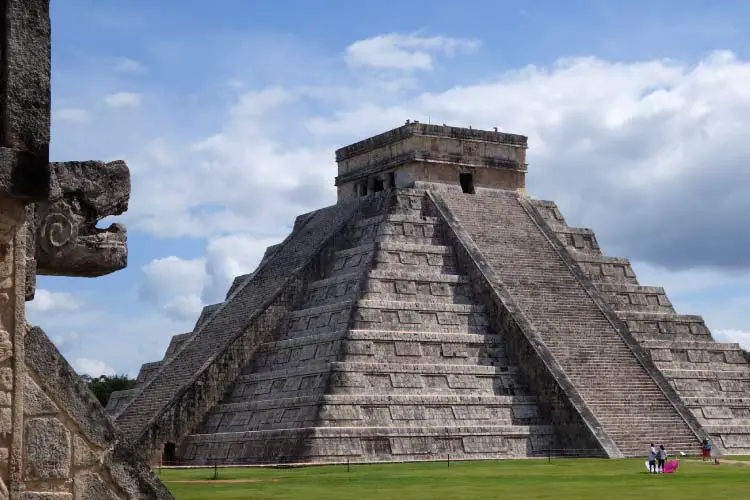
The ruins at the site exhibit a blend of architectural styles and are the most important examples of the Mayan & Toltec civilizations. El Castillo, a four-sided 24-metre (79ft) structure also known as the Temple of Kukulcan, is the most recognisable of all the ruins at the site. There is a multitude of other temples and structures to explore, decorated with intricate carvings of various gods and animals.
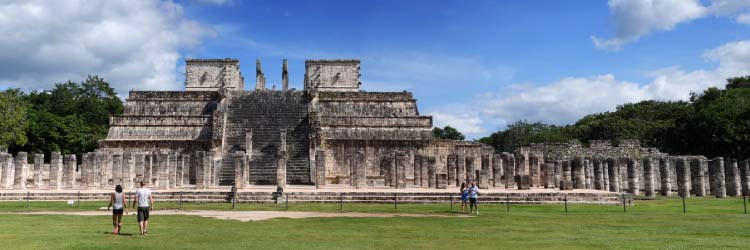
Machu Picchu – Cuzco, Peru
Of all of the great ruins left behind by the Incan civilization, Machu Picchu is by far the most spectacular in many aspects, not least of which is its location, found deep in the tropical forests of southern Peru. Terraced into the side of the Andes mountain range, Machu Pichu was constructed in the 15th century BC and was only used by the Incans for roughly 100 years before the 16th-century Spanish invasion.
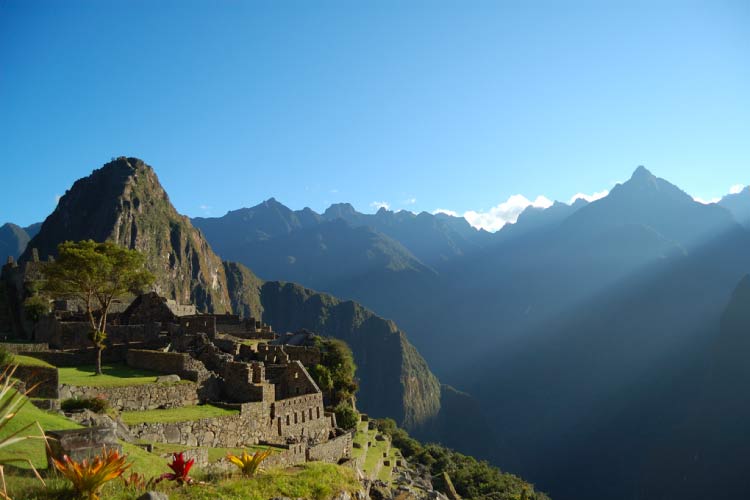
Never actually discovered by Spanish invaders, Machu Pichu wasn’t known to the western world until 1911 when it was discovered by Hiram Bingham, a professor from Yale University. The purpose of Machu Picchu has been debated over the years, it is now generally accepted to have been an imperial estate for the Incan emperor at the time, Pachacuti. A lot of the terraced houses at the site have been restored, which gives visitors a clearer vision into what life must have been like at this mountainous getaway.
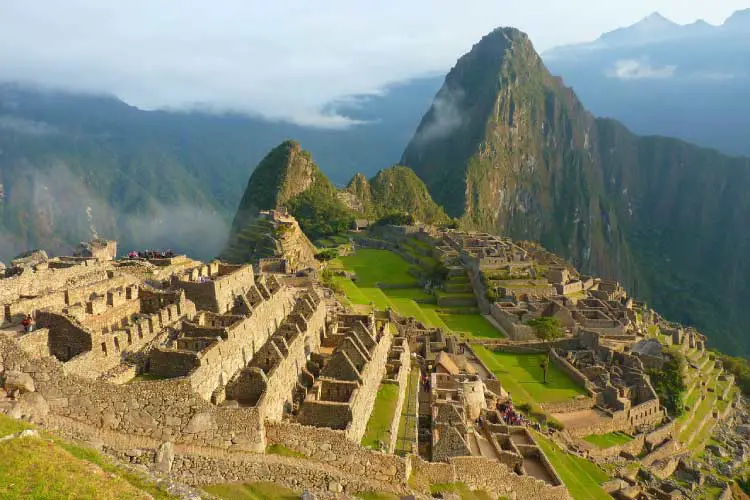
Taj Mahal – Agra, Uttar Pradesh, India
The Taj Mahal is easily the most recognisable mausoleum in the world, this white marble building sits on the southern bank of the Yamuna River in northern India. Commissioned in 1632 by Mughal emperor, Shah Jahan, the mausoleum was built in dedication to the emperor’s wife who died in childbirth.
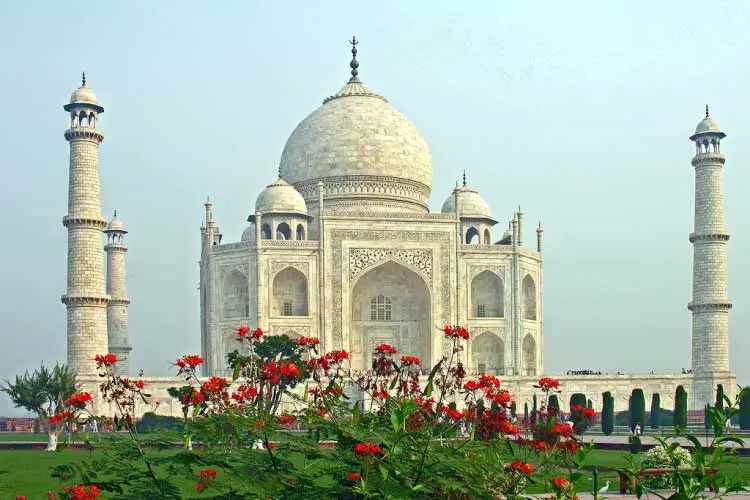
It is said to be the finest example of Mughal architecture, a combination of Islamic, Persian, Turkic and Indian architectural styles. The walled complex is made up of the main mausoleum, which sits at the north end, and a beautiful symmetrical garden with a central pool and immaculately decorated gates. Both the interior and exterior of the building exhibit some of the most incredible examples of calligraphy and tile work.
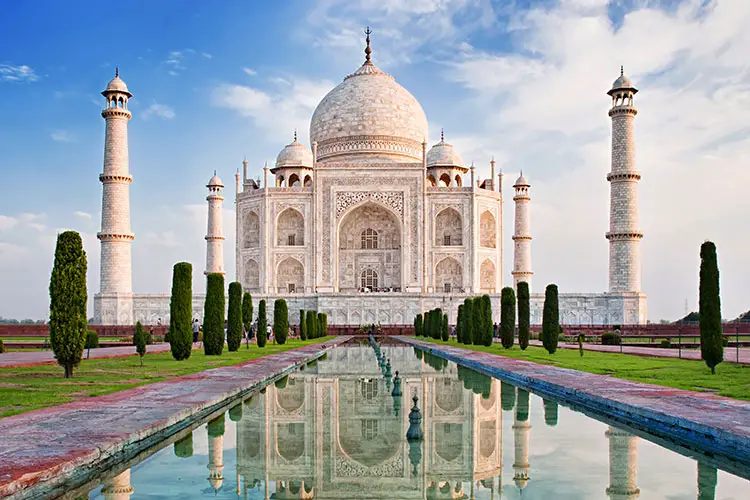
Christ the Redeemer – Rio de Janeiro, Brazil
The most recently constructed of the New 7 Wonders of the World, Christ the Redeemer was completed in 1931 and sits majestically atop Mount Corcovado overlooking Rio de Janeiro, Brazil. At 30 meters (98 feet) high, this statue is the largest example of the Art Deco architectural style, which is characterised by its combination of modern style with intricate craftsmanship and rich materials.

In this specific case, Christ the Redeemer is made from reinforced concrete and mosaicked with thousands of pieces of soapstone tile. When visiting this famous landmark you have the option of either hiking or taking a panoramic elevator up to the top of Mount Corcovado affording travellers one of the most breathtaking views in the world, overlooking the famous Copacabana and Ipanema beaches.

Finalists
Stonehenge – Amesbury, United Kingdom
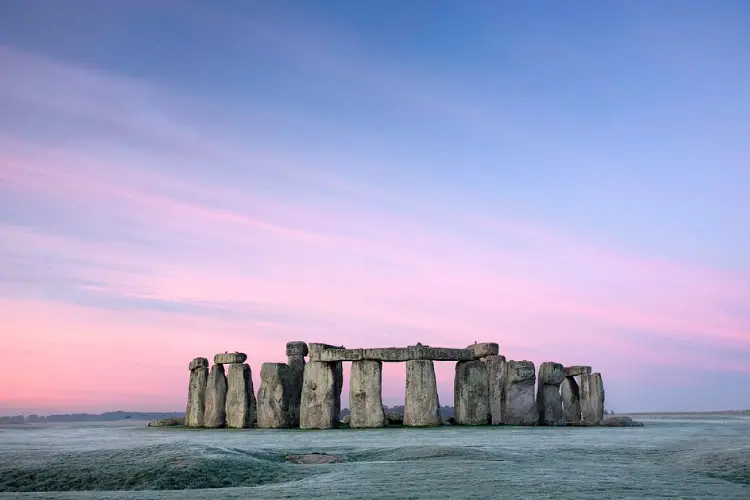
The first semblance of Stonehenge is thought to have been started around 3100 BC, however, this first iteration was essentially just a very large circular ditch (sorry) and the gigantic monoliths we see today didn’t arrive on site until between 2600 – 2400 BC. Each of these massive stones is around 4 meters (13 feet) high, 2 meters (6.9 feet) wide and weighs approximately 25 tonnes. The exact purpose of Stonehenge has been contested over the years with theories ranging from a temple to an astronomical device.
Acropolis of Athens – Athens, Greece
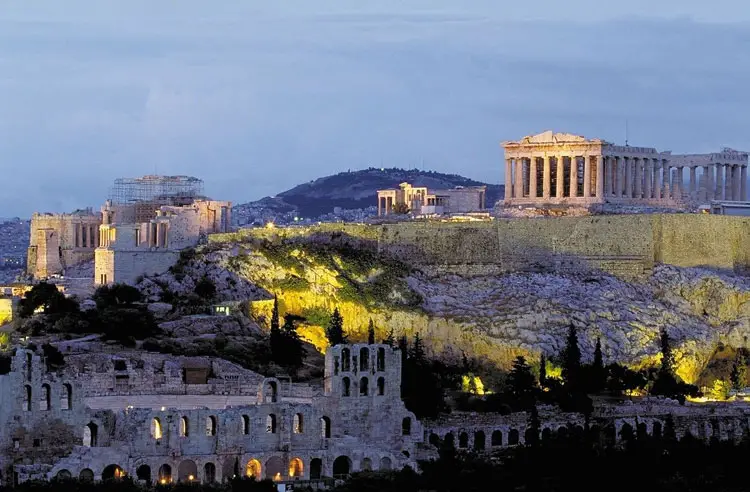
The Acropolis of Athens is a rocky hilltop in the centre of Greece’s capital city, which houses some of the most iconic landmarks from Greek Antiquity including the Parthenon, the Erechtheon and the Propylaea. The Parthenon is perhaps the most famous example of Doric architecture, characterised by its grooved columns and simple bases and capitals. The views from the Acropolis are particularly stunning, looking out over other popular landmarks such as the Theatre of Dionysus and the Temple of Olympian Zeus.
Hagia Sophia – Istanbul, Turkey
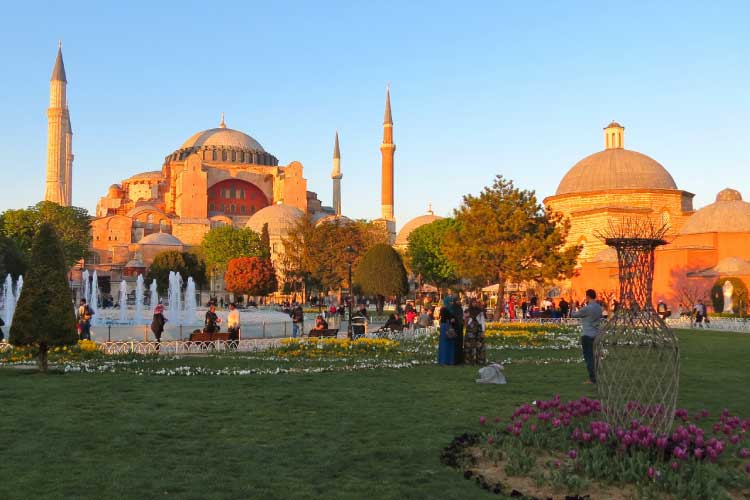
The Hagia Sophia is one of the most immaculately decorated buildings in the world, built in 6th century BC, it is one of the most important monuments of the Byzantine empire. It was built initially as the city’s main cathedral in the days of Constantinople (modern-day Istanbul), was later used as a mosque by the Ottoman Turks, and was more recently turned into a museum. As of 2020, the Turkish government has approved plans to turn the site back into a mosque, a subject of much controversy in political and religious communities.
Angkor Wat – Angkor, Cambodia
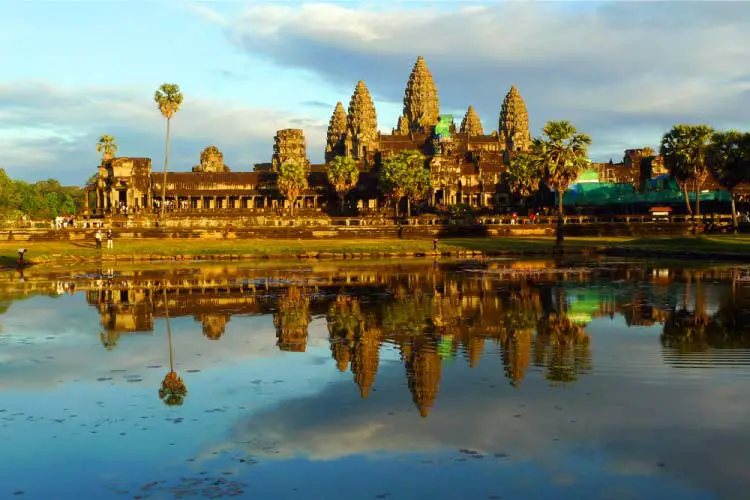
Angkor Wat is a temple complex in Cambodia’s northern province of Siem Reap, at 400 acres, it is the largest religious monument in the world. The Khmer Empire, also known as the Angkor Empire, came to power at the beginning of the 8th century AD and built this temple complex around the 12th century AD as a dedication to the Hindu god, Vishnu. A powerful empire, the Khmer ruled over much of southeast Asia until the fall of Angkor in the 15th century AD. Angkor Wat is the best-known example of Khmer architecture.
Moai – Easter Island, Chile
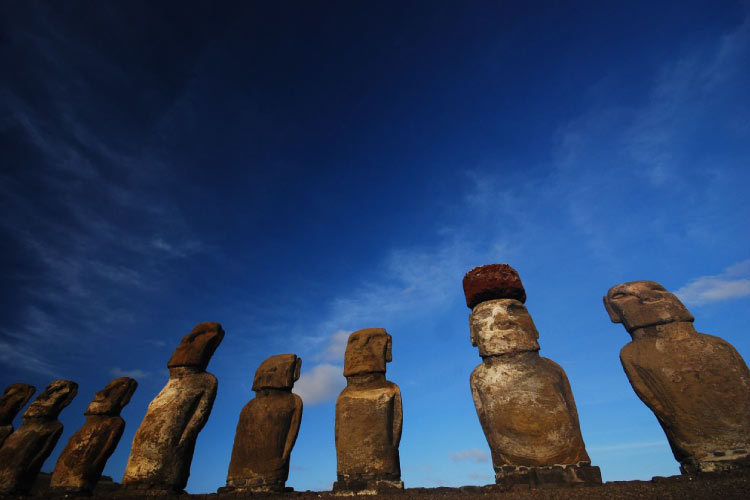
Easter Island, also known as Rapa Nui, is a small Chilean island roughly 2,300 miles (3,700 km) off the coast of the mainland in the middle of the South Pacific Ocean. It owns a unique group of Polynesian sculptures known as Moai carved into massive pieces of rock, the heaviest of which weighing upwards of 82 tonnes. The most recognisable Moai sit on a large stone platform gazing inland, watching over the land. Much like the monoliths at Stonehenge and the building blocks of the Great Pyramid, the construction and transportation of these figures is thought of as a remarkable and mysterious feat.
Timbuktu – Mali
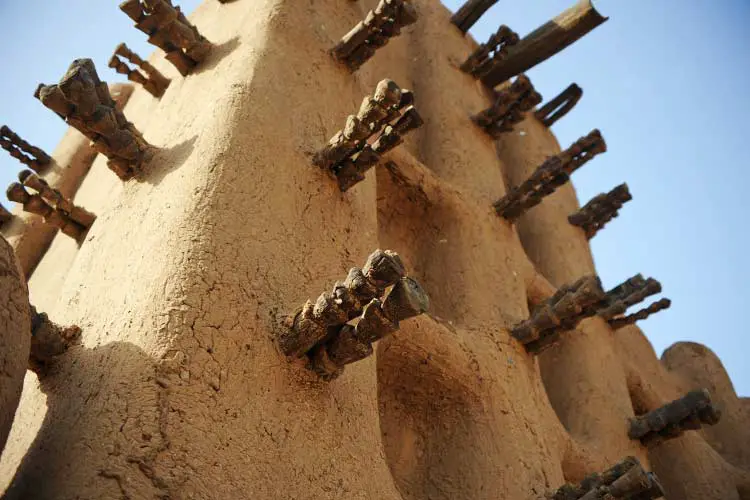
Timbuktu is located on the southern edge of the Sahara Desert in the centre of Mali and is the lone entry on this list representing the continent of Africa. An important cultural centre for the Islamic community during the 15th and 16th centuries AD, Timbuktu’s architectural style is completely different from any of the other new wonder of the world. It features three mosques made from mud brick and is perhaps the most famous example of earthen architecture on earth.
Alhambra – Granada, Spain
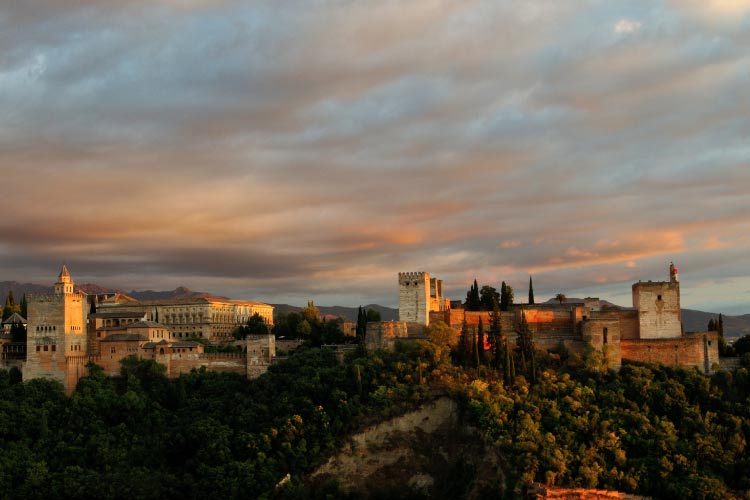
Perched atop a hillside in the Andalusia region of Spain, the Alhambra bears the architectural influence of both European and Islamic styles, having been owned by both the Nasrid dynasty, the last Muslim dynasty to occupy Granada, and subsequently Charles V after the Narid kingdom fell to the Spanish in the late 15th century. Inside the complex, you can still see remnants of the Nasrid dynasty, in particular, the large mural on the ceiling of the Hall of Kings. Meaning “the red castle”, the Alhambra has a red-brick hue that is particularly apparent at sunset.
Red Square – Moscow, Russia
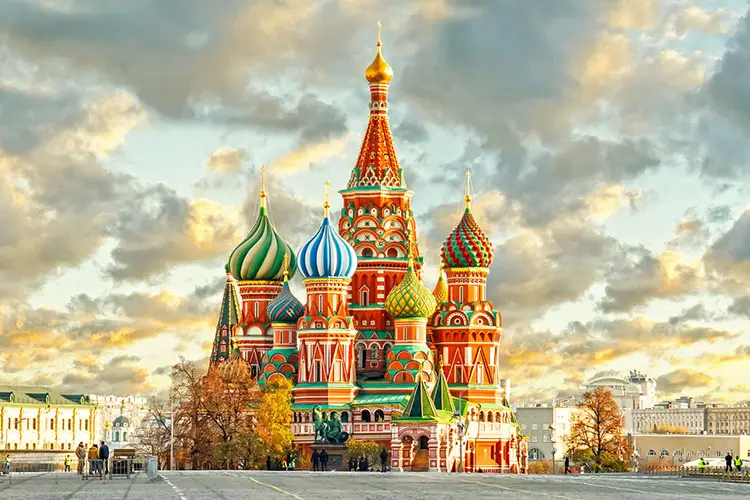
An almost 73,000 square metre (800,000 sqr ft) open square in the centre of Moscow, Red Square is home to some of Russia’s most beloved monuments including St Basil’s Cathedral, The Mausoleum of Lenin and the monument to Minin and Pozharsky. The city square sits directly outside the Kremlin on the banks of the Moskva River and hosts the Christmas market and impressive military parades like the yearly Moscow Victory Day Parade.
Kiyomizu-dera – Kyoto, Japan
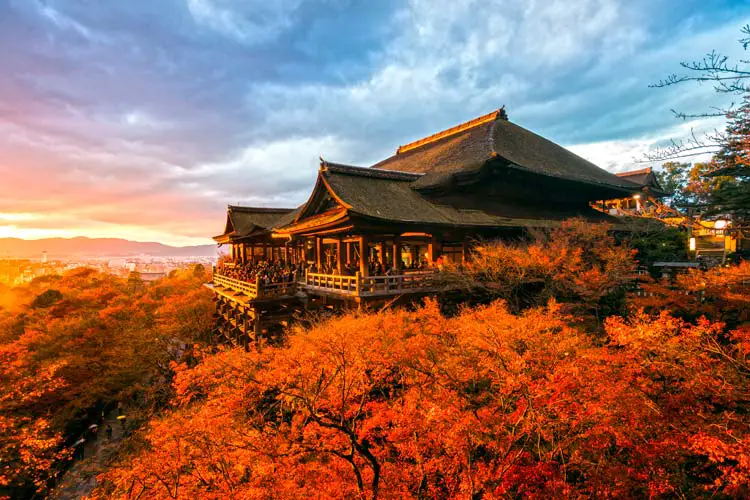
Also known as Temple of the Pure Water Spring, the Buddhist temple of Kiyomizu-dera was initially founded in 798 AD by Sakanoue Tamuramaro, the military leader of Japan at the time. The complex has been expanded over the years and, in true Japanese fashion, the current building was constructed in 1633 without the use of a single nail. The temple’s most popular feature is its viewing platform which looks out over the main hall and its three-story pagoda, which is one of the best examples of Momoyama architecture. Kiyomizu-dera can be found on the eastern side of Kyoto on the side of Mount Otowa.
Neuschwanstein – Füssen, Germany
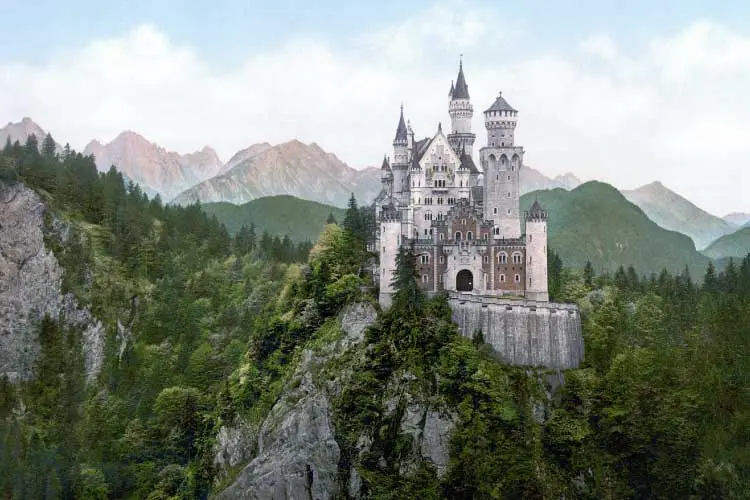
As we discussed in our article about European Medieval Castles, although this impressive structure is known as a castle, having never stationed a permanent garrison, Neuschwanstein is technically a palace. Regardless, this beautiful building can be found in Germany’s deep south in its largest state, Bavaria. The palace was commissioned by Ludwig II of Bavaria and he took a keen interest in its design, asserting that the style of the exterior should be medieval. Aside from the difficulty of constructing such a building on the top of a rocky hill, the palace is truly one of the most visually impressive landmarks in the world.
Statue of Liberty – New York, United States

The only structure on this list to share its engineer with another, the Statue of Liberty was gifted to the United States by France in 1886 to commemorate the centenary of American independence. The statue, which is made up of thin copper sheets laid over a steel framework, was designed by Frédéric Auguste Bartholdi and engineered by nonother than Gustave Eiffel, the man behind the Eiffel Tower. The statue stands at the entrance to New York Harbour opposite Liberty State Park.
Eiffel Tower – Paris, France
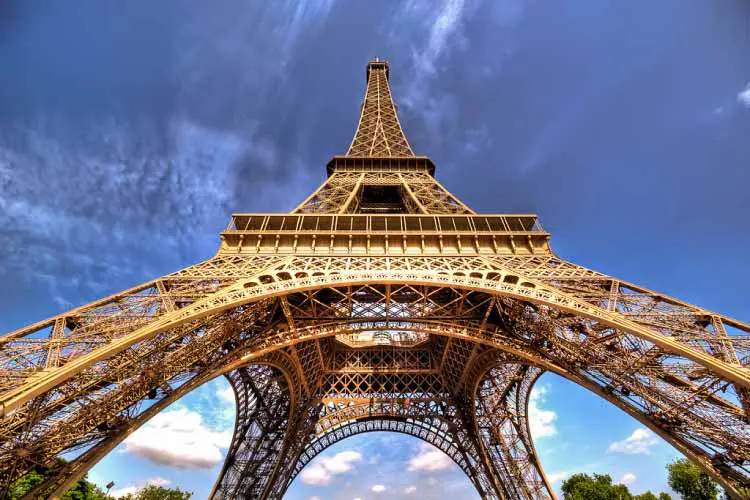
The Eiffel Tower, named after its engineer Gustave Eiffel, was constructed in the late 1880s in preparation for the International Exposition of 1889. The plans for the structure were met with criticism, being made entirely of wrought iron, however, the construction went ahead and the tower was the main gateway for the exposition. The Eiffel Tower was the world’s tallest building for four decades before being succeeded by New York’s Chrysler Building in 1930. Fun fact: a now-famous conman named Victor Lustig “sold” the Eiffel Tower twice by presenting it for sale as scrap metal during a period of disrepair in the 1920s.
Sydney Opera House – Sydney, Australia
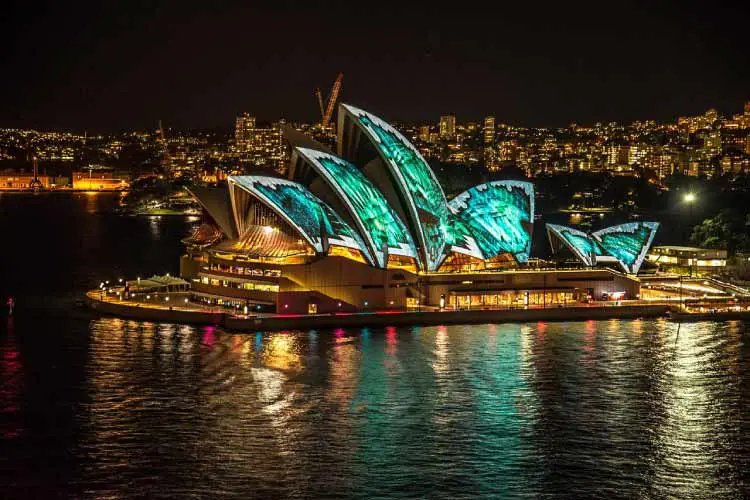
The Sydney Opera House is the most recently built of all the wonders on this list and, while it might be quite dissimilar to the others, does a fantastic job of representing modern architecture. According to UNESCO, the Sydney Opera House is of outstanding value to the discipline of structural engineering and building technology. This building sits next to Sydney’s Royal Botanic Garden on a peninsula protruding into the capital’s harbour.
